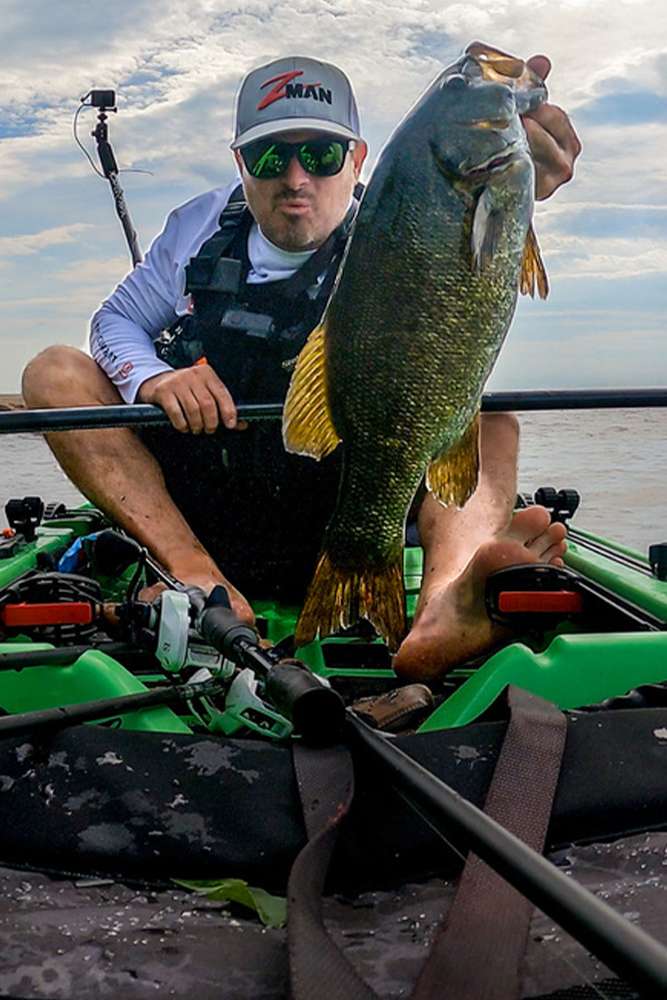
Even though I fish on the kayak side, I have numerous friends on the Bassmaster Elite Series and other pro tours that I’ve collaborated with, so I feel I have a decent pulse on each of the communities. One thing I repeatedly hear from my pro boater friends is how much they love fishing new water, and how at the highest level they don’t get to quite as much as they’d like due to so many of the requirements I touched on previously.
The beauty of kayak fishing is the fact that we currently have much lower requirements to hold an event in a location. We’ll practically never run out of “new water” to explore until our threshold increases substantially. New water keeps the sport fresh, keeps the anglers excited to explore new fisheries, and it prevents the “local hammers” from having a slight advantage every year on the same fisheries.
Honestly, new fisheries are what get me most excited about each year’s upcoming schedule. A large part of the fun is the prep work, the map study and trying to solve the new puzzle each fishery presents.
As I wrote previously, I don’t feel there is a true overall rift, but I can tell it’s bubbling up more than some realize. So long as both parties understand that we all have the same right to be on the water, respect each other on and off the water and communicate, we’ll be OK. A lot of boaters have no idea that kayaks hold such large, competitive tournaments.
Recently, on Lake Seminole, a boater pulled right next to me and started fishing a small creek mouth that I was fishing. I asked how many anglers were in his tournament and he said 12. I replied telling him I was in an event fishing against 175; he didn’t even realize we had tournaments and apologized for rolling right up on me while fishing that creek.
So, a lot of it is still an education and communication thing, where one party or the other just doesn’t realize what the other has at stake. Now, in my opinion, it shouldn’t have mattered if I was in a tournament or just “fun fishing,” he probably should have started his day somewhere else given how small the creek mouth was. Still, the point is made that we need to continue to communicate with one another and respect each other on the water and at boat ramps that we all share.
Currently, the three national kayak bass fishing trails are doing an unbelievable job of finding fitting locations, working with each other on scheduling and developing rules and boundaries that “set us apart” by allowing for plenty of eligible water where traditional boats cannot access. Plus, setting these rules with understanding that the beauty of the kayak is it can still fish the main lake or offshore locations where mega schools of bass live. It truly is what makes the kayak so special, its versatility to go where traditional boats can go and beyond.
If you’ve never experienced tournament fishing at any level, I’d highly encourage you to join in on some kayak events, especially because the cost of entry is so low. It honestly doesn’t matter if you are in a $3,000 or $4,000 Old Town or Hobie, a generic $300 from a big box store or somewhere in between like me in a $700 or $800 Crescent Kayak. The kayak community doesn’t judge; we accept everyone and their fishing style of choice.
While spending upwards of $15,000 on a setup is becoming more common, it’s not necessary to get into the game or be successful. To prove my point, last year I was eventually able to earn that Hobie B.O.S. Angler of the Year title, and I did so with around $1,250 in my entire kayak setup including rods and reels. I’d recommend starting smaller, with just a local club or one of the state B.A.S.S Nation Kayak clubs. Or feel free to jump straight into one of the national trails, where entry fees are still just around $250.
The kayak world has done an incredible job blazing its own path, growing economically in our space, while also heavily contributing to the overall economy of the bass fishing world. We of course buy the same equipment, and many of us follow along with the major bass boat trails and download, click and listen to the same podcasts, shows, etc. My hope is that bass boaters will dabble a little in kayaks, and more kayak anglers will move up into a bass boat.
You don’t have to chose one or the other, you just have to choose the bass. It’s about the bass; it’s our common bond and why we do this. Hopefully the two parties can continue to live in harmony like the largies and smallies on Champlain, because if we can, then I know kayak will continue to be seen as a positive force that raises the tide for all ships, whether you choose fiberglass, aluminum or plastic.

